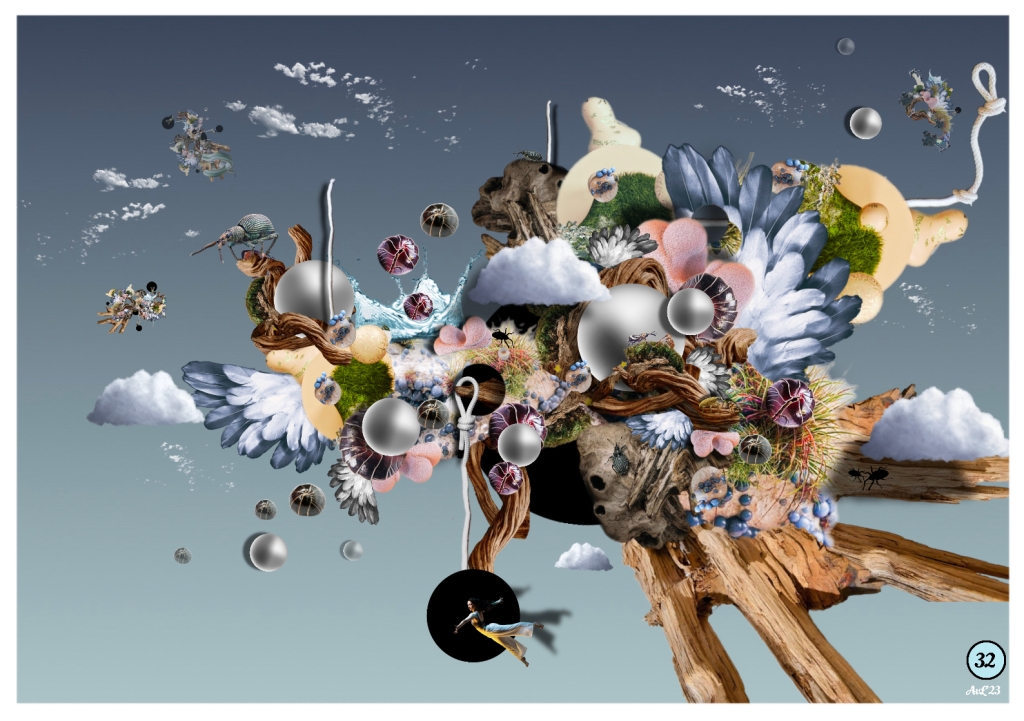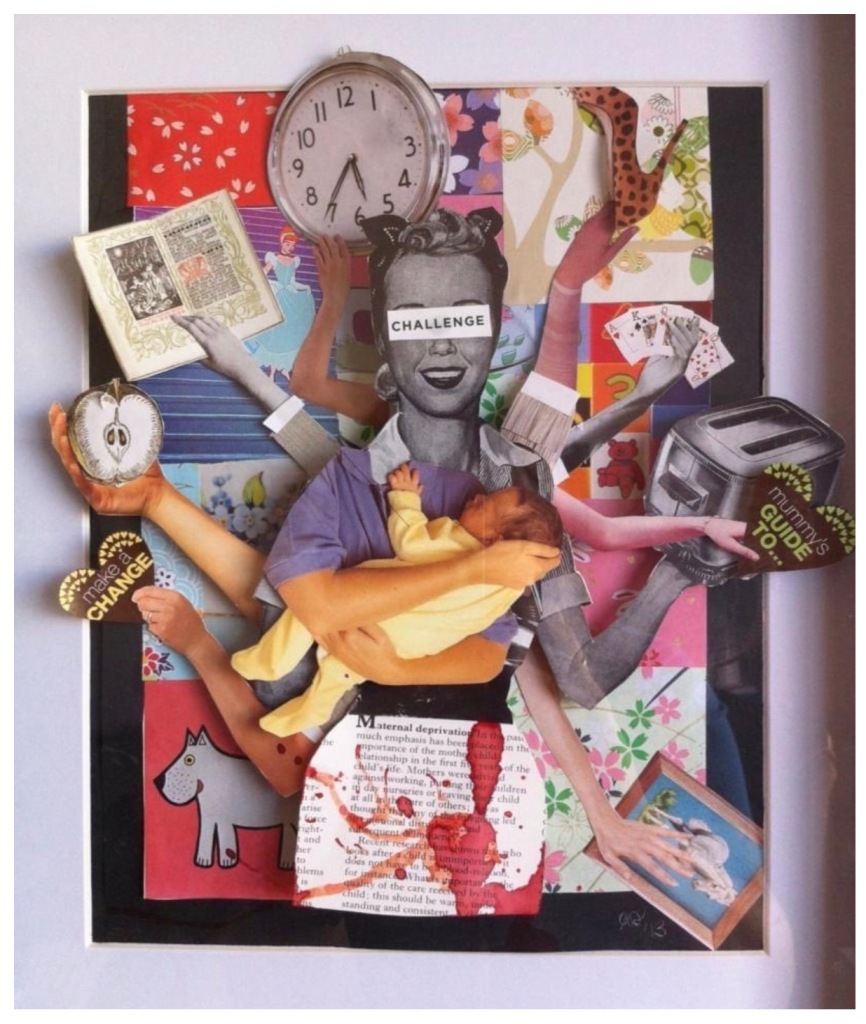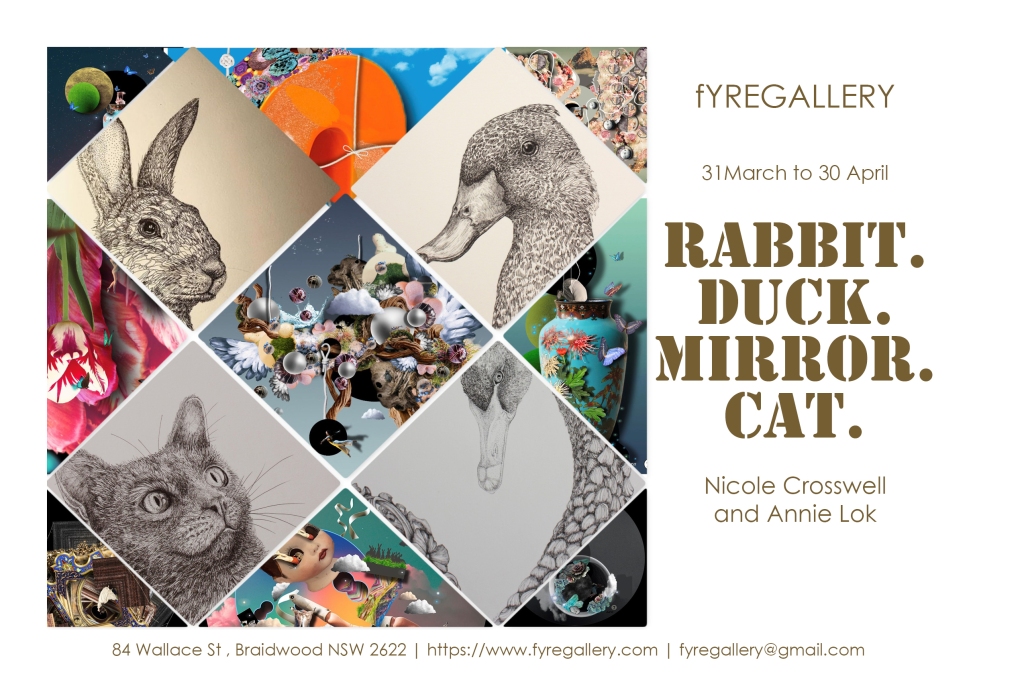
What is your first memory of creating?
Drawing dinosaurs – brontosaurus and Stegosaurus to be exact – with coloured pencils in Kindergarten. I got a stamp with a lion saying ‘Grrrreat!’ from my teacher, Mrs. Lovejoy. I have never felt prouder!
What inspires you to create art?
I’m inspired to create because I know what art is and what it does, and I want to be a part of it! It is a voice when we are
unequipped at how to communicate in other ways. It is a representation of what is beautiful, revered, fearful, and ominous in this world. I am inspired by those that take a risk with art, that innovate with materials, and who inspire change with art. Truthtellers, storytellers, history makers. I read over this thinking it is way too philosophical, but as deep as it might be, I hope that the readers can respect and even align with this way of thinking ‘cause art makes me brave, and that can only be a good thing! Just to drive this point home, and because I feel this is a safe space, to this day my art aims to look at human life: the good, the bad, and the ugly. I use it to talk about issues surrounding childhood, sexual identity, and living with both physical and mental illness.
How has your creative process evolved over time?
It has evolved through life experience and a wanting to experiment with unfamiliar materials. After graduating from Art School I moved to Melbourne, practicing and
exhibiting art within the inner city and Northern suburbs: life drawing in Fitzroy turned into solo and group shows of
figurative drawings – mostly self-portraiture – at Brunswick Street Gallery and Off the Kerb in Collingwood; a co-curated group exhibit shown at Forty-Five Downstairs on Flinders Lane where my cut and paste collage and assemblage pieces were first on public display.
Now that we have moved back close to the ACT in a small town in New South Wales called Bungendore I have been dabbling with collage in the digital realm using an app called Baazart. It uses photo editing tools and recently AI technology to help users create any type of visual or animated content. I have been using Baazart for two years now and feel I’ll be making use of it for a bit longer yet.
I have been lucky to be invited by Gallery Director Cheryl Hannah along with Scientific Illustrator and observer of the natural world artist Nicole Crosswell for an exhibition in Braidwood, NSW at fYREGallery.
The show is titled Rabbit. Duck. Mirror. Cat features twenty of my digital collage from the series titled Rabbit Holes.
These works are a fusion of figuration, the natural world, and dreamlike scenarios inspired by the literary imaginings of authors such as Lewis Carroll, Margaret Atwood, and Laurel K Hamilton. My work tends to evolve through the imagery I find. When I need to expand on my visual library Pinterest and Instagram are the best places to turn to: they are like toy stores! Since entering the world of collage, from my cut and paste series around motherhood titled Being Mouder to escaping the reality of physical and mental illness into the digital voids I’ve created in the Rabbit Hole series. Collage has offered me a lot of freedom for me that most other mediums haven’t. It is the closest I’ll come to plucking the dreams and concepts from my mind and putting them onto paper (or iPad screen). The next steps in this evolution will more than likely be the introduction of animated collage that I will sell as NFT’s, or translating them into
performance art. There are a few things to work through first before I get there, but in the meantime I’m happy to stay here in the digital world.
Do you have any rituals or habits that help you get into the creative mindset?
Well because I suffer from chronic pain and find it hard to get into a comfortable
position because of my back, I currently
recline on my bed, with Chai in hand, a movie or music blearing from my phone, and just play around with a concept or with imagery using the creative editing app Baazart, or by sketching in a visual diary. Stretching and taking breaks away from the screen and off the bed to make more tea is also mandatory! I tend to lose track of time though on a daily basis when in the creative ‘zone’, and that is why dinner is always late and my iPad runs on 10%
battery! It’s hard to break out of the ‘zone’! You never know: you could be two steps away from creating a masterpiece!
Another habit I find helpful is to write down an idea or a dream when I have it. I work out solutions for images all the time, even subconsciously, so it always helps to carry something with you to write on.

How do you approach choosing materials and mediums for a new project?
It depends on what genre of work it is. If it is something classic like a still life I like to use drawing materials, preferably coloured pencils on paper. I feel that the objects selected are so simple that for them to be translated using digital imagery would lose their purpose, its impact. Plus I like to keep up with drawing as it was the main medium for me for a long time. The current work, being so surreal and complex, however, suits the photographic and digital realms perfectly. I can make changes with the click of a button. At the end of the day though I still want my work to have my hand attached to it; for it to look like it was created by me.
That’s something I worry about with digital mediums like this, is that my voice and the themes behind the work will be lost, which is easy to have to happen when you create work that can look nothing more than a pretty picture.
How do you deal with creative blocks or lack of inspiration?
Oh, this is the worst! Yes, it’s frustrating, but it happens to the best of us. I have a bit of a ritual: I concern myself with other matters like gardening, op shopping or True Crime Podcasts. Take the mind off being in a funk. It’s with a clear head and an open mind that the universe provides us with an answer. You just need to keep your eyes and mind open to it. I find a good hour on Pinterest can stir up those creative juices too.
Do you work on multiple pieces at once or focus on one at a time?
I always work on two to three pieces at a time but they tend to be from the same series, unless I have a commission. I find once I get going that the images in my head and in the digital library are too chock-a-block that they couldn’t work
altogether in the one artwork even if I tried. Plus it gives me a breather from working on one work for too long. I find that I can make the decision that it is completed easier as all the images I select to start with are of very high quality for printing, and I follow similar compositions – usually triangular – so there’s no need for rearranging. I can come back to it with ‘fresh eyes’ later.
How do you incorporate feedback and criticism into your work?
This is an important question. Ok, before I answer it, I can’t help it but share some advice with any readers out here,
particularly if you are at the beginning of your creative journey, say for example studying art within a creative institute.
Maybe these words will help you.

Dealing with feedback and criticism, whether it be positive or negative can all depend on where you are in your creative journey. Art school for example is an opportunity to learn the tools you will need to practice art professionally. However, within this environment, students can put too much pressure on themselves to know, that they can successfully project to others that we were lucky to be born with the skill of demonstrating why we are artists: why we are passionate about art! We have it all figured out and thus need to show everyone that we have technical brilliance that will be the envy of all! The positive feedback I receive drives me on and keeps me motivated, however, it is the negative feedback where there is an opportunity for real growth. At first criticism and negative feedback can feel like an attack, to the point of questioning why you are in Art school, to begin with. Did I belong here?
I realise now that it wasn’t an attack, it was constructive, designed to look at our work from a new perspective for the purpose of making us better communicators – both technically and conceptually -through this visual medium.
Look at why you’re getting any negative feedback objectively:
-Is it because the themes or messages in your work are not being understood?
-Are you showing your art to the right audience?
-Could your themes or messages be expressed using different imagery?
Whatever it might be, take it as an opportunity for growth.
For me, I don’t think the dead birds I painted in Art School were a strong representation of the ‘social commentary of death in society’. My work was strange, and while it was strong technically, I became lost and uninspired by continuing with the series. It was not what I wanted to do (although, later in life, I have developed both a scientific and perhaps morbid curiosity of the lowbrow and macabre. It has evolved into turning our sitting room into a mini-museum of oddities!), However, I convinced myself and everyone else that I felt some insecurity about going solo, making art without the direction of the students and staff. At the end of my undergraduate studies, my whole art practice was under scrutiny. I planned to follow up with a year of Honours, and while I was devastated when Robert Boynes, my mentor and head of the Painting department at the time called to tell me the bad news, he stressed that it was not the end of the world! I could still be an artist, nothing could change that. He allowed me to understand I had learned all I could there, that I was to find my true calling as an artist outside of the institution, to find inspiration and my own unique voice.
So, trusting in all that I learned at Art School, I took off my training wheels, drew a deep breath, and rode that creative bike all the way to Melbourne. Art was inside of me and that could never be taken away, in any capacity.

Criticism and feedback never goes away. It becomes part of the experience of making and viewing art, and should be a welcome part: it means that someone is paying attention! Once you show your work to the public it doesn’t belong to you anymore: people will interpret it with their own eyes and minds and hearts.
I wasn’t going to grow as an artist at Art School, and that was ok.
If you feel strongly enough about your storytelling through art, I would recommend never letting that go! Find others that share the same passions as you. Find a platform to share your gift. Criticism can make you forget why you are
creative. Equally, I don’t believe in selling out by pleasing the masses: making art for the purpose of trending, gaining popularity, or making lots of money. If creating something visually beautiful is important to you then go for it, just ask
yourself if it’s true to who you are. That is when the real magic happens.
It took a rejection from Honours for me to understand that. ■
You can view Annie’s work on her
Instagram page:
@Annie.lok.75
fYRE Gallery Exhibition:
Braidwood, NSW, Australia


